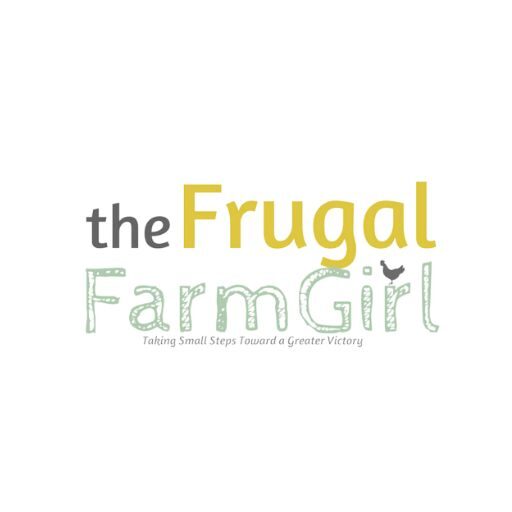Gardening can be quite an undertaking, especially when it comes to container gardening! Where do you even begin? Do you pick out your favorite flowers or maybe a particular color combination that will enhance your patio decor? Maybe even herbs to season up your meals?
Choosing plants for a container garden is much more than just picking out pretty colors and shapes. By learning the basics of what goes into building an effective and beautiful container garden, you can take some of overwhelm out of making decisions about which plants to choose.
Here are a few things to consider when choosing plants for your container garden.

Environment
Choose plants that will thrive in the conditions you provide. Make sure to research the needs of each plant before you choose it. For example, choose plants that can tolerate heat and humidity if you live in a warm climate.
How Big Will the Plant Get?
Choose plants that are of a manageable size. You don’t want to choose plants that will outgrow your container or take up too much space.
Types of Plants To Grow

Herbs are the most commonly grown edible plant for containers. Vegetables come in second, and fruit isn’t grown in containers as often – probably because many think it would be too challenging to produce fruit in containers.
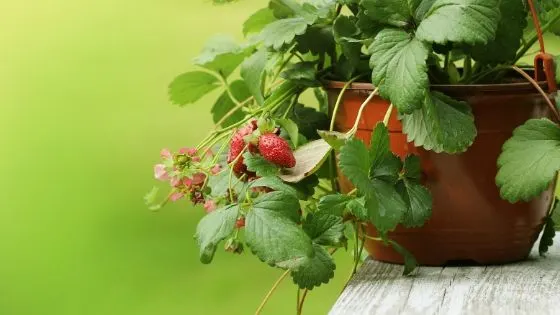
Strawberries are one fruit that grows particularly well in many types of containers. In addition, strawberries are generally quite hardy and can even be grown in unique grow bags that you can hang on a wall outdoors.
When we lived in our first home, we bought strawberry plants in a hanging basket. They are gorgeous and save space. There are several different types on Amazon here.
Read or Pin: The Best Containers for Container Gardening
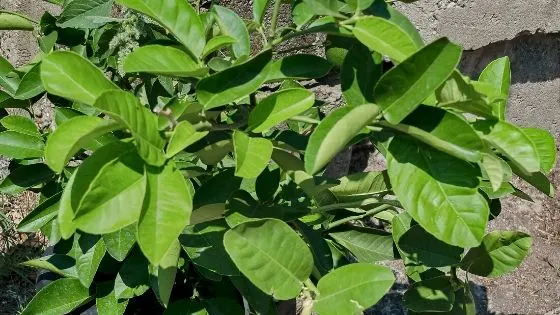
Dwarf fruit trees can often be grown in large pots. Many smaller dwarf citrus trees grow nicely in pots, and if kept well-pruned, they can make beautiful indoor decorations.
Many types of dwarf berry bushes will grow in containers, although they are usually cumbersome and can’t be moved easily. Dwarf varieties of blueberries and raspberries have been successfully grown in containers.
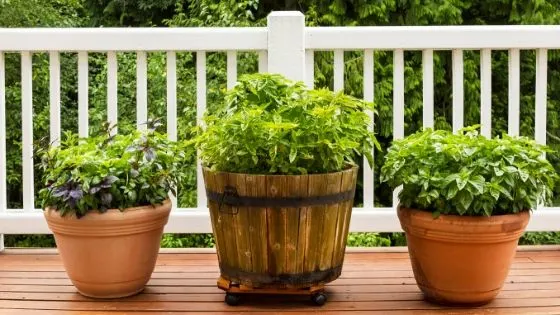
Herbs to Grow
Wide varieties of herbs do well in containers. Parsley is perhaps the most popular herb for container growing. Basil and chives are also extremely popular for growing in containers. Cilantro can be grown successfully in containers.
Almost all herbs can be grown successfully in containers. The key is finding a significant enough container. Some herbs can quickly be grown in relatively small containers. For example, chives, parsley, and basil can all grow in smaller pots.
I love the large containers at Tractor Supply when they go on clearance at the end of the year.
But some plants grow a bit larger. Sage, for example, is a bush. So it needs a pretty big pot. Oregano also grows rather significantly and requires a large container. Although technically a fruit, tomatoes are probably the most popular “vegetable” for home gardeners.
Container gardeners are no exception, and they plant tomatoes in droves. It’s probably due mainly to the fact that good tomatoes can be tough to find.
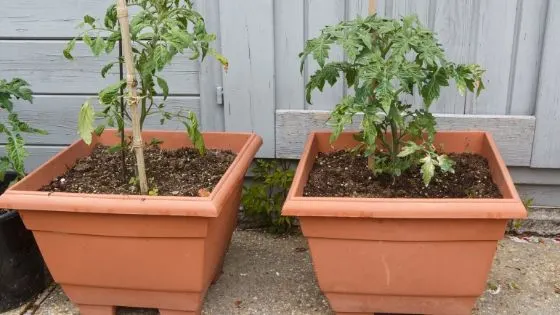
Tomatoes
The tomatoes in most grocery stores are picked green and artificially ripened so they survive shipping without bruising and last longer on the shelves.
Most tomato varieties can be grown in containers, especially cherry tomatoes, grape tomatoes, Roma tomatoes, and small salad tomatoes.
Other plants commonly grown in containers include lettuce and other salad greens, cucumbers, squashes, beans and peas, radishes, carrots, scallions, all kinds of peppers, and even corn and potatoes.
Read or Pin: How to Start Seeds Indoors to Save Money
Direct Sow or Indoor Seeds
Most vegetables can be grown in containers if you use the proper procedure. You can quickly grow most of your plants from seeds. If you’re growing plants indoors, you can sow directly into the pot, but you can risk damaging delicate seedlings during thinning.
You should probably grow most of your plants from seedlings that you purchase locally, but you can also start your seedlings indoors in smaller pots and then transplant them into larger pots later.
It’s easier to start plants from seedlings when you can, but you may find a lot of satisfaction in starting your own.
Container gardens are a great way to get your green thumb on display, and with the right plants, they can be low-maintenance and beautiful additions to your home or office.
When choosing plants for your container garden, it’s essential to think about the amount of sunlight the space receives and the size of the pot.
You also want to choose plants that will thrive in your climate.
Though choosing plants for a container garden may seem daunting, it’s really quite fun and enjoyable. With a bit of research, you can figure out not only which plants will thrive in the particular setting you’ve created but also create an aesthetic masterpiece that you and your visitors will admire.
Just imagine the pride you would feel when showing off your lovely oasis; the satisfaction derived from creating something of beauty that stimulates all of your senses would be unbeatable!
Don’t let fear get in the way – plant some joy into your life today and dive into creating a beautiful container garden. Chances are, you’ll soon find peace in mastering one of nature’s greatest art forms.
For more gardening tips and advice, check out our other blog posts below.
